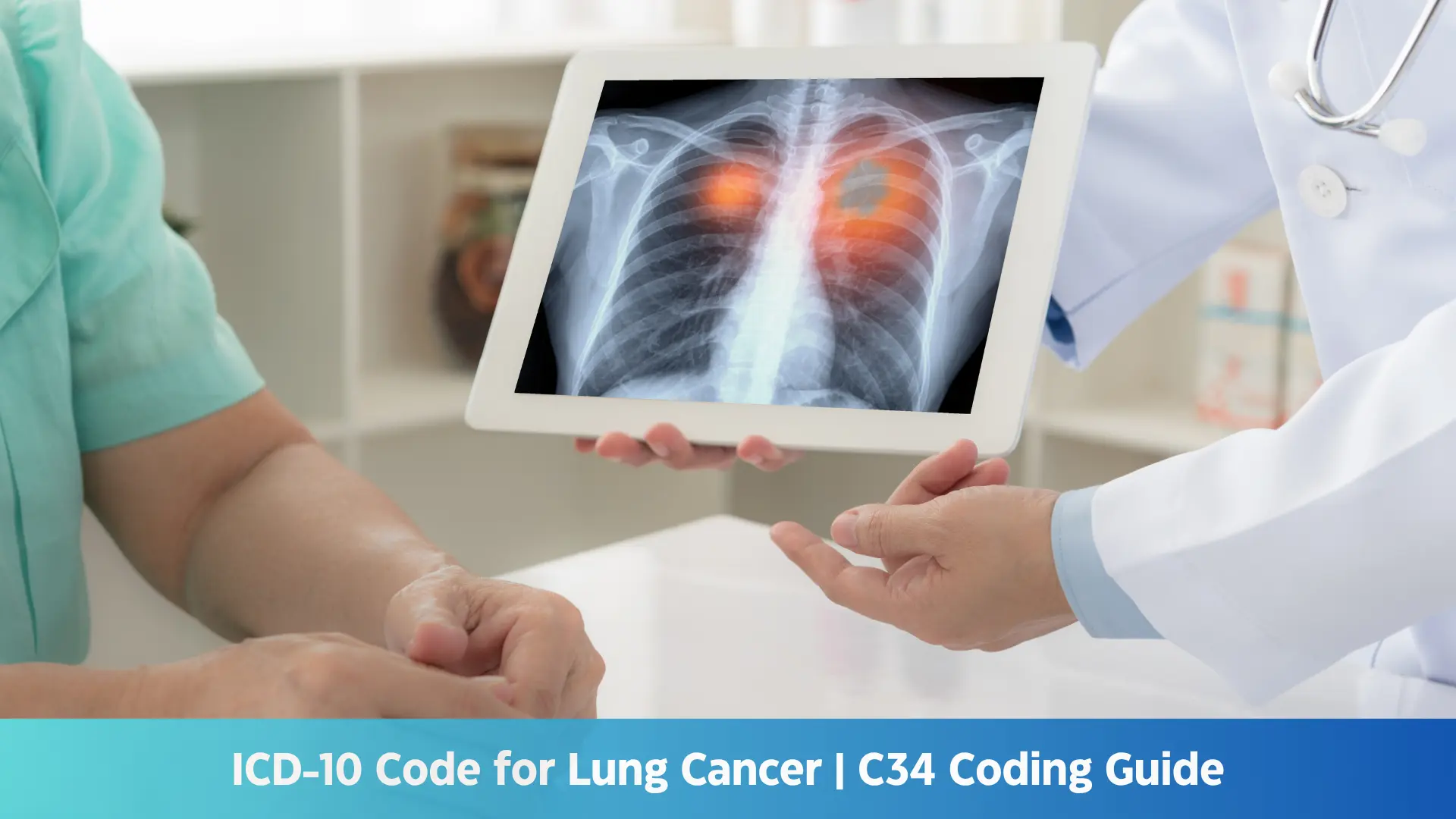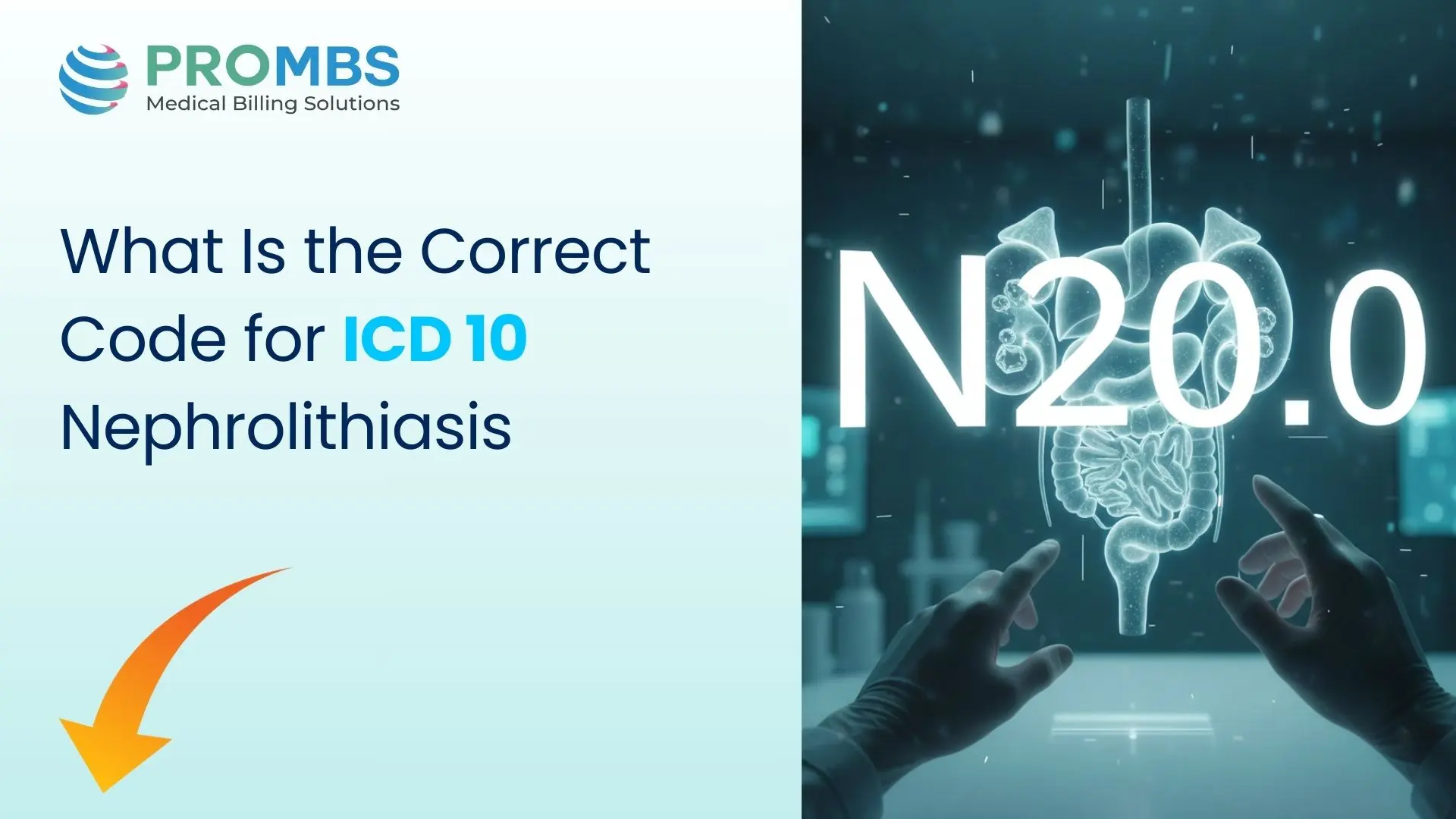According to the World Health Organization (WHO), lung cancer accounts for approximately 2.2 million new cases and 1.8 million deaths annually, making it the most lethal cancer worldwide. The American Cancer Society (ACS) projects that in 2025, there will be approximately 226,650 new lung cancer diagnoses and 124,730 deaths from lung cancer in the United States
Beyond clinical management, lung cancer presents complex challenges in medical coding and billing due to its varied histological subtypes, tumor heterogeneity, staging intricacies, and treatment modalities. The International Classification of Diseases, Tenth Revision, Clinical Modification (ICD-10-CM) provides a detailed framework to classify lung cancer cases by anatomical location, histology, and laterality.
Accurate ICD-10 coding for lung cancer is critical for:
- Ensuring precise clinical documentation
- Facilitating appropriate reimbursement and minimizing claim denials
- Supporting epidemiological research and public health surveillance
Maintaining compliance with payer and regulatory requirements
This comprehensive guide explores ICD-10 Code for Lung Cancer (C34) in detail, emphasizing coding methodologies, documentation requirements, and best practices for optimizing reimbursement and regulatory compliance.
Overview of ICD-10 Codes for Lung Cancer
ICD-10-CM classifies lung cancer under category C34, representing malignant neoplasms of the bronchus and lung. This category is further subdivided by specific anatomical sites within the lung to provide precision in coding:
- Main bronchus
- Upper lobe
- Middle lobe
- Lower lobe
- Overlapping sites where the tumor spans multiple adjacent lung regions
- Unspecified portions when tumor location is unknown or not documented
This subsite specificity is critical because it impacts treatment protocols, prognosis, and reimbursement frameworks. Payers often require exact site and laterality data to adjudicate claims accurately, making granular coding essential.
Differentiating Primary vs. Secondary Lung Cancer
When coding for lung cancer, it is crucial to differentiate between primary lung cancer and secondary lung cancer. While primary lung cancer originates in the lungs, secondary lung cancer (also known as metastatic lung cancer) occurs when cancer cells spread to the lungs from another primary site.
The C78.00–C78.02 codes are specifically used to report secondary malignant neoplasms of the lung. These codes should be assigned when the lung is affected by metastasis from a primary malignancy located in another part of the body. For example, if breast cancer has metastasized to the lung, the coder should use the appropriate secondary malignancy code (C78.00–C78.02) in addition to the primary tumor code for breast cancer.
The secondary malignancy codes for the lung include:
- C78.00: Secondary malignant neoplasm of the lung, unspecified
- C78.01: Secondary malignant neoplasm of the right lung
- C78.02: Secondary malignant neoplasm of the left lung
These codes are essential for accurately reflecting the patient’s condition and ensuring appropriate reimbursement. Failing to assign these codes correctly can lead to incorrect reimbursement and potential claim denials.
Additionally, metastatic lung cancer from any other primary tumor site—such as breast cancer, colon cancer, or melanoma—requires these secondary malignancy codes to provide a complete and accurate picture of the patient's cancer history.
By properly utilizing the C78.00–C78.02 codes, healthcare providers and coders can ensure accurate reporting of metastatic lung cancer and prevent issues related to undercoding or incorrect claims processing.
Common ICD-10 Codes Used for Lung Cancer
Below is an overview of the most frequently used ICD-10-CM codes for lung cancer, including required laterality characters:
| ICD-10 Code | Description | Required Laterality Character | Example with Laterality |
|---|---|---|---|
| C34.0 | Malignant neoplasm of main bronchus | 1 (right), 2 (left), 9 (unspecified) | C34.01 (right main bronchus) |
| C34.1 | Malignant neoplasm of upper lobe, lung | 1, 2, 9 | C34.12 (upper lobe, left) |
| C34.2 | Malignant neoplasm of middle lobe, lung | 1, 2, 9 | C34.29 (middle lobe, unspecified) |
| C34.3 | Malignant neoplasm of lower lobe, lung | 1, 2, 9 | C34.31 (lower lobe, right) |
| C34.8 | Malignant neoplasm of overlapping sites | N/A | C34.8 |
| C34.9 | Malignant neoplasm of unspecified part | N/A | C34.9 |
Laterality — a critical ICD-10 coding element Each lung cancer diagnosis must include a seventh character indicating laterality:
Code Meaning
- Right lung
- Left lung
- Unspecified lung
Omission or incorrect use of laterality codes (e.g., defaulting to unspecified when laterality is known) can lead to claim denials and reimbursement delays. Accurate laterality coding supports precise clinical records and payer adjudication.
How to Choose the Correct ICD-10 Code for Lung Cancer
Accurate code selection requires comprehensive clinical documentation and understanding of coding rules:
Documentation Requirements
- Clear identification of the primary tumor site (e.g., upper lobe, main bronchus)
- Specification of tumor laterality (right, left, or unspecified)
- Notation of any secondary tumor sites or metastases
- Distinguishing between primary and metastatic lung cancers
Reporting Secondary and Metastatic Sites
- Primary lung cancer: Code within C34
- Metastatic cancer involving lung: Use secondary malignancy codes (C78.00–C78.02) along with the primary tumor’s code
- Metastasis to other organs from lung cancer: Add corresponding secondary site codes
ICD-10 Coding Guidelines Specific to Lung Cancer
The ICD-10-CM Official Guidelines for Coding and Reporting provide specific rules to ensure consistent and compliant lung cancer coding:
- Primary vs. Secondary Lung Cancer:
Code primary lung tumors under C34. If the lung is involved by metastasis from another primary site, assign appropriate secondary malignancy codes. - Carcinoma in Situ vs. Malignant Neoplasm:
Carcinoma in situ of the lung is coded as D02.2 and must not be confused with malignant neoplasm codes. - Additional Codes for Complications:
Code coexisting conditions and complications separately, such as pneumonitis (J70.1), pleural effusion (J90), or respiratory failure (J96.x), to fully capture the clinical scenario.
Impact of Accurate ICD-10 Coding on Reimbursement and Compliance
Payers utilize ICD-10 codes to evaluate medical necessity, coverage eligibility, and appropriate reimbursement levels. Accurate lung cancer coding:
- Minimizes claim denials and rejections by avoiding vague or incorrect codes
- Optimizes reimbursement by reflecting tumor complexity and laterality
- Ensures regulatory compliance and reduces risks of audits or fraud investigations
Improper coding, such as using C34.9 (unspecified lung) despite available laterality information, can cause delayed payments and increased administrative burden.
Related CPT Codes and Billing Considerations
| Procedure Category | Common CPT Codes |
|---|---|
| Lung biopsy | 32405, 31628 |
| Thoracentesis | 32554 |
| Chemotherapy administration | 96401–96549 |
| Radiation therapy | 77261–77499 |
Updates and Changes in ICD-10 Codes for Lung Cancer (2025)
How Pro-MBS Supports Accurate Lung Cancer ICD-10 Coding
Pro-MBS provides specialized lung cancer ICD-10 coding services delivered by certified oncology coders with expertise in oncologic nomenclature, staging, and payer requirements. We ensure comprehensive clinical documentation review and strict adherence to current coding guidelines to optimize coding accuracy and compliance.
Our services include:
- Detailed analysis of clinical documentation, imaging, and diagnostic reports to assign precise, site-specific ICD-10 codes with correct laterality
- Systematic coding audits to detect inconsistencies and mitigate risk of claim denials or compliance violations
- Continuous monitoring of ICD-10-CM updates and payer-specific policies to maintain alignment with regulatory changes
By leveraging Pro-MBS’s coding expertise, healthcare providers improve reimbursement integrity and reduce operational risks associated with lung cancer coding.



